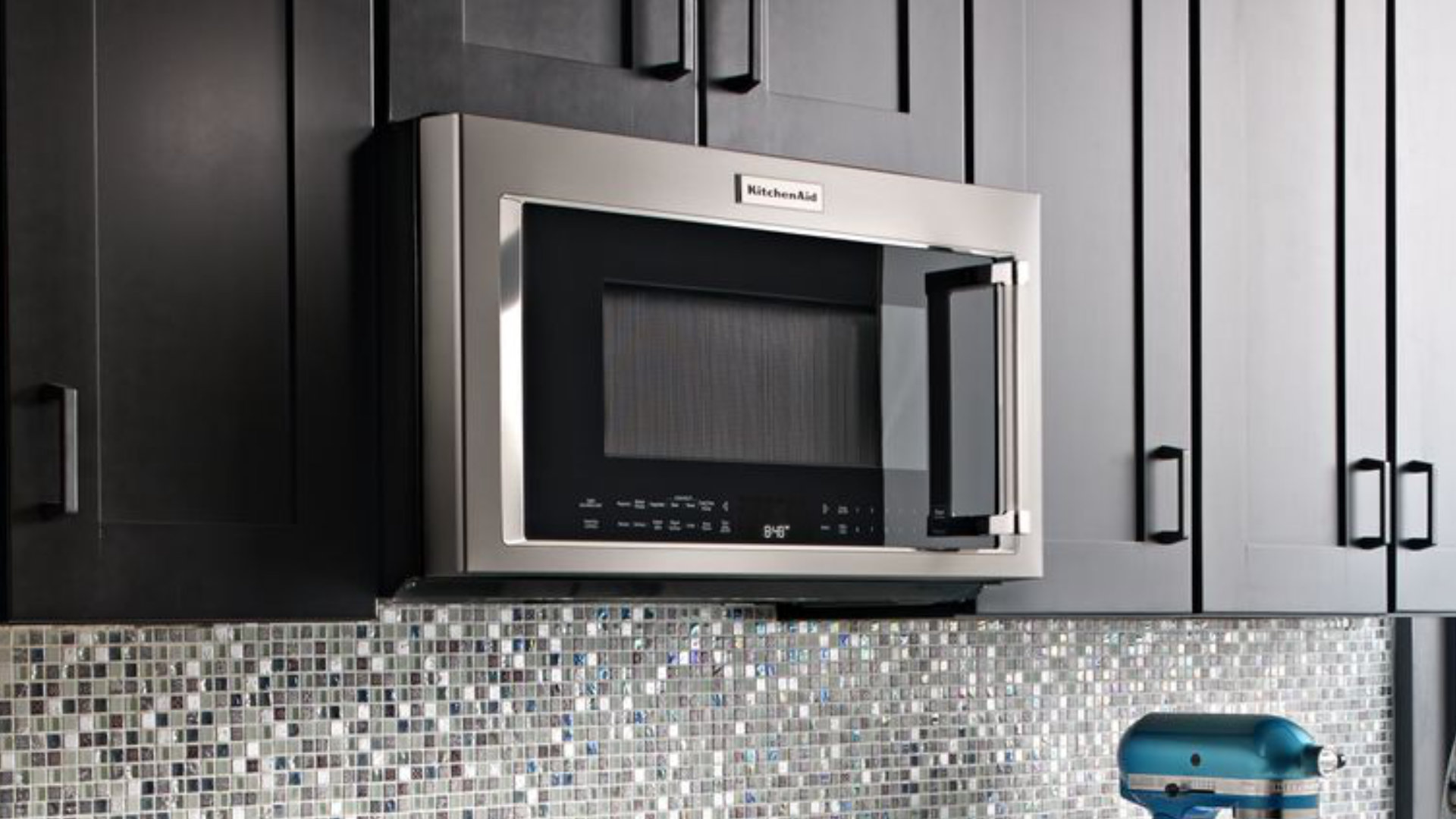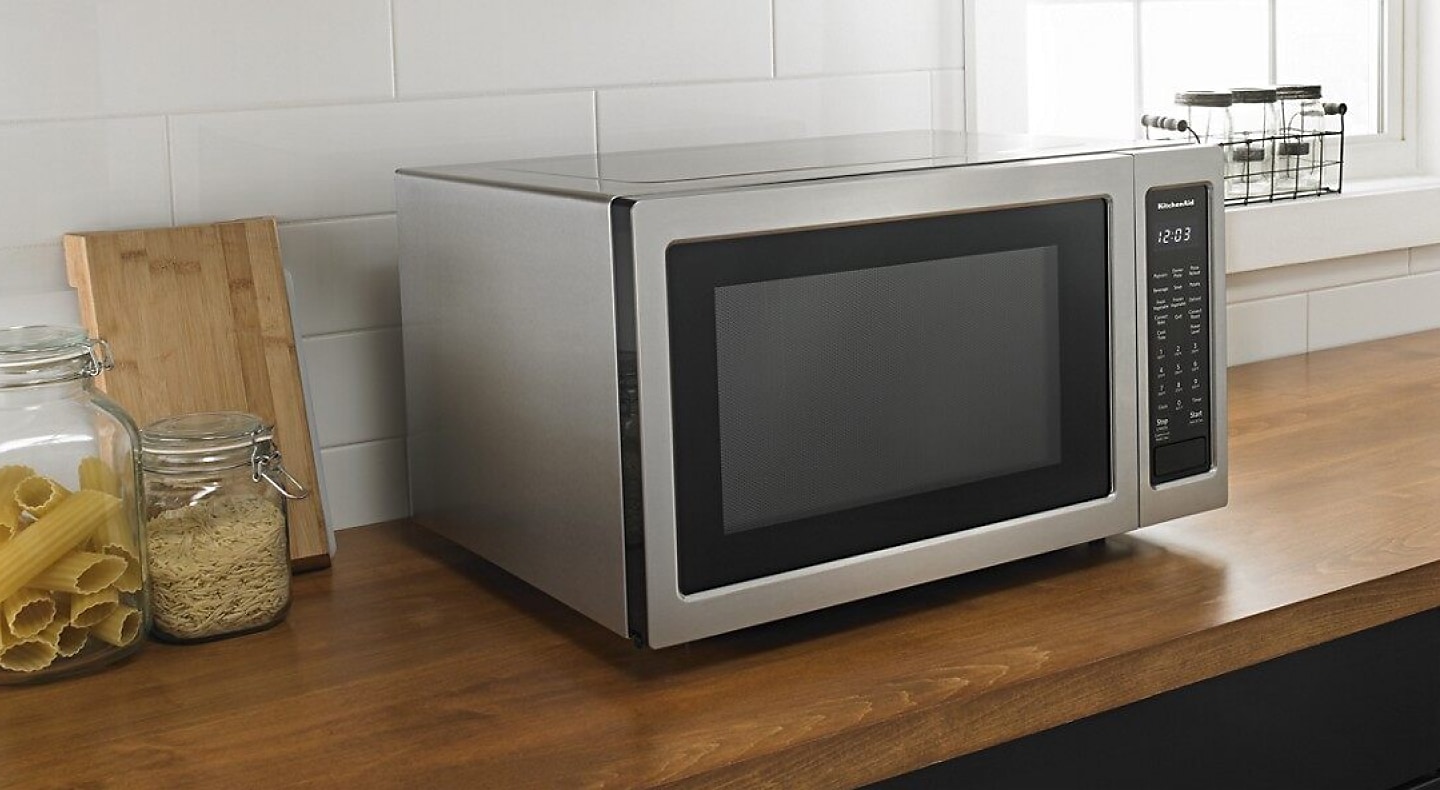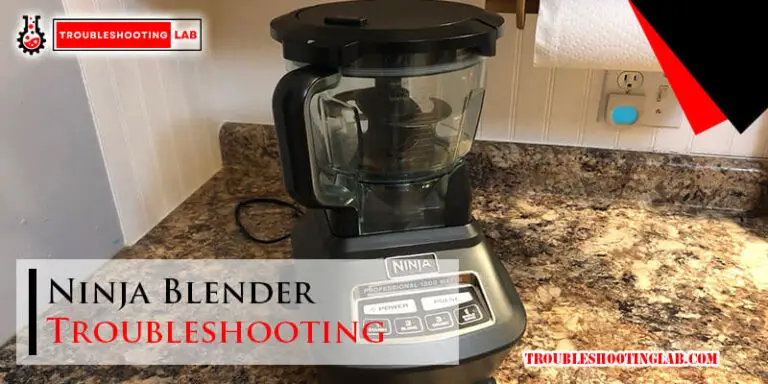Kitchenaid Microwave Troubleshooting: Quick Fixes Guide
Is your KitchenAid microwave acting up? Whether it’s not heating properly, making strange noises, or refusing to turn on, we know how frustrating it can be when your trusted appliance suddenly stops working.
But don’t worry—you’re not alone, and help is here. In this guide, we’ll walk you through simple troubleshooting tips to get your microwave back in action. You don’t need to be a tech expert to follow along, and the solutions might be easier than you think.
Ready to save yourself time, money, and stress? Let’s dive in and fix that microwave together!
Common Issues And Symptoms
KitchenAid microwaves make cooking simple, but they can develop issues over time. Recognizing common problems early can save time and money. Below are some frequent issues and their symptoms. These will help you identify what might be wrong with your microwave.
Microwave Not Heating
If your microwave runs but doesn’t heat, the magnetron might be faulty. The magnetron is responsible for generating heat. A defective diode could also cause this issue. Check if the microwave’s power settings are correct. Make sure the door is properly closed, as this can impact heating.
Display Not Working
A blank or unresponsive display can indicate a power issue. It might be due to a blown fuse or a faulty control board. Inspect the power cord for damage or loose connections. Sometimes, a simple reset can fix this problem.
Unusual Noises
Grinding or buzzing sounds may point to mechanical problems. The turntable motor could be damaged or worn out. A loose fan blade can also create strange noises. Ensure no foreign objects are inside the microwave causing interference.
Door Not Closing Properly
A microwave door that won’t close can affect functionality. This might happen due to broken door latches or misalignment. Dirt or food debris around the door frame can also block proper closure. Clean the area and inspect for visible damage to the latches.
Microwave Turning Off Mid-cycle
If your microwave shuts off during use, it could be overheating. A faulty thermostat might be the cause. Inspect the ventilation to ensure it isn’t blocked. Overloaded circuits can also trip the microwave, causing it to stop suddenly.
Quick Fixes For Heating Problems
Microwave heating problems can disrupt your cooking routine. If your KitchenAid microwave isn’t heating as expected, simple troubleshooting steps may help. These steps address common issues and can save you time and effort.
Checking Power Supply
The microwave needs a steady power source to heat food. Start by inspecting the power cord for damage or wear. Ensure the plug is securely connected to the outlet. Test the outlet by plugging another appliance into it. If the outlet isn’t working, try a different socket or reset your circuit breaker.
Inspecting The Magnetron
The magnetron generates the heat for the microwave. If it fails, the microwave won’t heat. First, unplug the microwave and remove the back panel carefully. Look for signs of damage, such as burn marks or loose wiring. If the magnetron looks damaged, it may need professional repair or replacement. Avoid using the microwave until the issue is resolved.
Adjusting Power Settings
Incorrect power settings can prevent proper heating. Check the microwave’s control panel and ensure the power level is set to 100%. Lower power levels may result in insufficient heating. Reset the microwave to default settings and test its heating function. Always use the correct power level for your cooking needs.
Resolving Display Errors
Dealing with display errors on your KitchenAid microwave can be frustrating. A malfunctioning display makes it hard to use the appliance effectively. Fortunately, most display issues are easy to troubleshoot at home. Follow these steps to identify and fix common display problems.
Resetting The Microwave
Sometimes, display errors happen due to temporary glitches. A simple reset can clear these issues. Start by unplugging the microwave from the power source. Wait for about 2 minutes before plugging it back in. This allows the system to reboot fully. After reconnecting, check if the display works properly.
If the microwave has a reset button, press it instead. Follow the instructions in your user manual for guidance. A reset often restores the display to normal settings.
Inspecting Control Panel Connections
Loose connections can cause display errors in your microwave. To inspect, disconnect the appliance from power for safety. Remove the microwave’s outer casing carefully using a screwdriver. Locate the control panel and check its wiring connections. Ensure all cables are securely connected to their ports.
If you notice damaged or frayed wires, they may need replacing. Contact a technician if you are unsure about handling electrical components.
Replacing Faulty Display Components
If resetting and inspecting connections do not solve the issue, the display itself may be faulty. Common problems include burned-out bulbs or damaged LED screens. Identify the specific component causing the error by consulting your manual.
Order a replacement part that matches your model. Follow the installation instructions or seek professional help. Properly installed components should restore the display functionality.
Fixing Door And Latch Issues
Is your KitchenAid microwave door refusing to close or latch properly? Don’t panic—this is a common issue, and most of the time, it’s something you can handle without calling a technician. Let’s break it down step by step so you can get your microwave working like new again.
Cleaning The Door Mechanism
Microwave doors rely on clean, debris-free mechanisms to function correctly. Even tiny food particles or grease can interfere with the latching system. Grab a damp cloth and gently wipe down the edges of the door, especially around the latch area.
Pay extra attention to the crevices where dirt and crumbs tend to collect. If grime is stubborn, use a toothbrush dipped in warm soapy water to scrub it away. A clean door mechanism might be all it takes to restore proper latching.
Adjusting Or Replacing The Door Latch
If cleaning doesn’t solve the problem, the latch itself could be misaligned or worn out. Open the door and check if the latch feels loose or looks bent. You can try realigning it by gently pressing it back into place.
If the latch is damaged, you’ll likely need to replace it. Replacement latches are usually affordable and available online or through KitchenAid customer support. Make sure to consult your microwave’s manual for specific instructions on removing and replacing the latch assembly.
Inspecting Door Switches
Your microwave’s door switches are safety components that ensure the appliance won’t run when the door is open. If the door won’t latch, these switches might not be engaging properly. Locate the switches (usually near the latch mechanism) and inspect them for any visible wear or damage.
Gently press on each switch to check if it clicks. If one of the switches doesn’t respond or feels stuck, it may need to be replaced. Door switch replacements can usually be done at home with a screwdriver and some patience—just make sure to unplug the microwave first for safety.
Why let a simple door issue sideline your microwave? These troubleshooting steps are straightforward, and you’ll likely have your appliance back in action without much hassle. What’s stopping you from trying them out today?
Dealing With Unusual Noises
Your KitchenAid microwave should work smoothly without making strange sounds. If you start hearing rattling, buzzing, or grinding noises, it’s a sign something might be wrong. Don’t ignore it—unusual noises often indicate underlying issues that, if unchecked, could lead to bigger problems.
Identifying The Source Of Noise
Before diving into repairs, pinpoint where the noise is coming from. Is it near the turntable, the vents, or the control panel? Run the microwave on a low setting without food inside and listen closely. Pay attention to any patterns or specific areas where the sound is louder.
Think about when the noise started. Did it happen after cleaning the microwave or moving it to a new spot? Small details like this can help you narrow down the cause.
Ask yourself: Is the noise constant or only when certain functions are used? Knowing this can save you time troubleshooting.
Inspecting The Turntable Motor
The turntable motor is a common culprit for strange sounds. Remove the glass tray and inspect the motor underneath. Rotate the spindle manually to see if it’s stuck or grinding. A worn-out or misaligned motor often produces clicking or grinding noises.
Clean the area around the motor. Sometimes food debris or grease buildup causes resistance. If cleaning doesn’t help, the motor may need to be replaced. Check your user manual for guidance or reach out to KitchenAid support.
Replacing a turntable motor is easier than you might think. You can find replacement parts online and install them yourself with basic tools.
Checking Internal Components
If the noise persists, it’s time to inspect the microwave’s internal components. Unplug the microwave for safety and remove the back panel (if you’re comfortable doing so). Look for loose screws, damaged wires, or worn-out parts like the magnetron or fan motor.
Loose screws can cause rattling, while a faulty fan motor might buzz or whir loudly. Tighten any loose components and check for signs of wear. If you’re unsure how to proceed, professional help is always an option.
Did you know even small issues like a bent fan blade can create loud noises? Fixing these minor problems early can prevent costly repairs later.
Don’t let unusual noises stress you out. By taking these simple steps, you can keep your KitchenAid microwave running smoothly—and quietly.

Credit: www.youtube.com
Microwave Shutting Off Unexpectedly
Is your KitchenAid microwave shutting off unexpectedly? It’s frustrating when a reliable appliance suddenly starts acting up. But don’t worry—you can troubleshoot this issue at home with a bit of patience and the right steps. Let’s dive into some common causes and solutions to help you get your microwave back on track.
Checking Ventilation
Microwaves need proper airflow to function correctly. Blocked vents can cause overheating, which might trigger the microwave to shut off as a safety measure.
Inspect the sides, back, and bottom of your microwave for blocked vents. Are you placing it too close to a wall or surrounding it with items? Move anything obstructing airflow at least 3 inches away.
Clean any dust or grease buildup on the vents using a damp cloth. A well-ventilated microwave is less likely to overheat and shut off mid-use.
Inspecting The Thermal Fuse
The thermal fuse is a safety device designed to cut power if the microwave overheats. If it’s faulty or blown, your microwave may turn off unexpectedly.
You’ll need a screwdriver to access the thermal fuse, typically located behind the control panel or near the magnetron. Once located, check it for visible damage or burns.
Use a multimeter to test the fuse for continuity. If it’s blown, replace it with a compatible part. Always unplug your microwave before working on it to avoid electrical shock.
Testing Electrical Connections
Loose or faulty electrical connections can also cause your microwave to shut off. This is especially common if your microwave has been moved or bumped recently.
Unplug the microwave and inspect the power cord for any visible damage. Check the outlet by plugging in another device to ensure it’s working.
If you’re comfortable doing so, open the microwave casing to inspect internal wiring for loose connections. Tighten any loose screws or connectors carefully. If you’re unsure, consider consulting a professional to avoid further issues.
Troubleshooting your KitchenAid microwave doesn’t have to be overwhelming. Start with these simple checks and repairs, and you’ll likely pinpoint the problem. Is there anything more satisfying than solving a household issue on your own?
Preventative Maintenance Tips
Keeping your KitchenAid microwave in top shape doesn’t have to be a hassle. A little preventative care can save you from costly repairs and frustrating malfunctions. By following these simple tips, you can keep your microwave running smoothly for years.
Regular Cleaning Routines
Cleaning your microwave regularly is more important than you might think. Food splatters and grease buildup can impact its performance and even cause unpleasant smells. Wipe the interior with a damp cloth or sponge after each use to prevent residue buildup.
Don’t forget about the turntable and the vents. These areas often collect crumbs and dust. A quick rinse or vacuuming will keep them clear and functional.
Have you noticed stubborn stains or lingering odors? A bowl of water with lemon slices heated for a couple of minutes can loosen grime and freshen the air inside. It’s a quick trick that works wonders.
Avoiding Overloading
Overloading your microwave can lead to uneven cooking and potential damage. Stick to recommended weight limits and use cookware that fits comfortably. Overcrowding can block heat distribution, leaving your food partially cooked or cold.
If you’re reheating multiple items, consider doing it in batches. It might take a little longer, but it ensures everything heats evenly. Plus, it reduces stress on the microwave’s components.
Remember: bigger isn’t always better. Oversized dishes can block the rotation of the turntable, causing wear and tear over time. Choose appropriately sized containers for the best results.
Proper Placement And Ventilation
Where you place your microwave matters more than you think. Ensure it sits on a flat, stable surface to prevent vibrations during use. An unstable placement can lead to mechanical issues over time.
Ventilation is critical for preventing overheating. Check that there’s enough space around the microwave—at least 3 inches on all sides. Crowded spaces can cause your microwave to struggle with airflow.
If your microwave is built-in or enclosed, check the vents regularly. Dust or debris buildup can restrict airflow, which impacts its performance. A soft brush or vacuum can help keep these areas clean and functional.
What’s your go-to tip for microwave care? Share your thoughts below and let’s keep the conversation going!

Credit: danmarcappliance.com

Credit: www.kitchenaid.com
Conclusion
Fixing a KitchenAid microwave can be simple with the right steps. Start by identifying the problem and checking common issues. Basic fixes like resetting or cleaning may solve it. For complex problems, consult the manual or contact support. Regular maintenance helps prevent future issues.
Always prioritize safety while troubleshooting. A well-functioning microwave makes cooking more convenient and stress-free. Follow these tips to keep your appliance running smoothly. Save time, money, and effort by addressing problems early.






